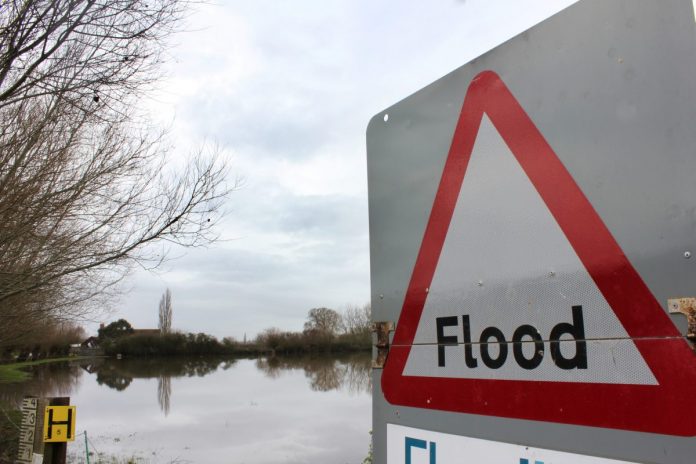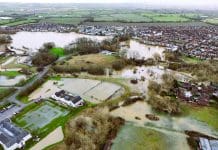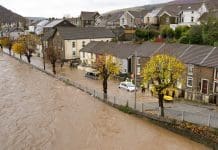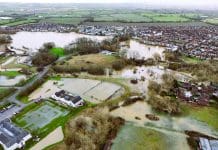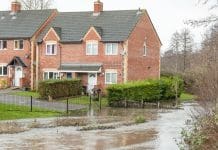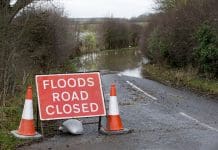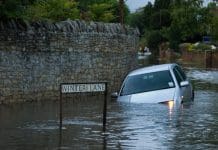Mitigating flood risk is becoming ever-more important in the UK, but so is water conservation. Will Rogers of AECOM and the Environmental Industries Commission says Sustainable Drainage Systems can contribute to both these aims
Harvey, Irma and Maria. Three names the people of the Caribbean and southern United States will not remember with any affection when they recall 2017. These recent hurricanes were a further reminder of the violent weather than can occur with devastating effect.
In the UK, we are spared storms of this intensity, but flooding can still occur at any time of year. In England, one property in every five is at risk of flooding, with about one in eight at risk from surface water flooding – the sort that arises from water running off land on to property. Properties are often considered at risk when there is a greater than 1% chance of flooding in any one year.
Surface water flooding is a particular risk as there is often little warning possible. Although weather forecasting is improving all the time, it is still hard to forecast intense rain very accurately and it is usually these intense local storms that create the most damaging surface water floods.
The effects of flooding are made worse by a historic lack of sustainable drainage from both large-scale developments, such as industrial sites, and the cumulative effect of small-scale ones like paved front gardens. Rapid runoff from unsustainably drained sites often increases local flood risk.
Climate change is projected to increase the risk of surface water flooding with warmer and more stormy conditions. It is notable that the unusually warm ocean near the Caribbean was one reason the recent hurricanes were so dangerous.
But we also need to conserve water, especially in south-east England, so simply ensuring the water gets away without causing flooding is not enough.
Sustainable Drainage Systems can both reduce surface water flood risk and help ensure storm water is not “lost” to the sea, or unnecessarily over-treated at plants designed to treat foul water. They do this by managing water at each stage of the drainage system, in the same way as happens when rain falls on undeveloped land.
This leads to other benefits such as pollution control, by appropriate treatment before discharge to groundwater or water courses, and erosion control by reductions in rates of flow. Well designed SuDS can enhance the landscape and provide amenity facilities, as well as encouraging local biodiversity.
Should Schedule 3 be implemented?
Although the Flood & Water Management Act 2010 was promoted with all-party support, the government appears reluctant to implement Schedule 3, which would establish bodies responsible for approving and then adopting SuDS.
In 2014, with no sign of implementation, EIC attempted to broker agreement between housebuilders and the government but it was clear ministers did not want to hinder housebuilders by appearing to introduce more requirements. Instead, the government published national non-statutory SuDS standards (Defra, 2015). In a recent national survey, only 8% of professionals thought these standards drove high quality SuDS.
With Defra responsible for flood management policy and DCLG responsible for planning policy is there a conflict?
For example, the current planning guidance (DCLG, 2015) includes the following:
“Whether maintenance and operation requirements are economically proportionate should be considered by reference to the costs that would be incurred by consumers for the use of an effective drainage system connecting directly to a public sewer.” (My underlining).
There is no requirement to consider SuDS benefits, such as outlined above. Given the myths surrounding SuDS adoption and maintenance – “expensive, impracticable, bureaucratic” – further education on the costs and benefits is still needed.
In the past seven years since the act was implemented without Section 3, it is pertinent to ask what difference would it have made had this section been implemented? Would fewer houses have been built?
Several of the smaller lead local flood authorities, who are responsible for surface water flood management and who would have been the approval bodies, would probably have struggled initially due to lack of resources. But transitional support could have been provided by consultants – and there would certainly have been better scrutiny of the proposed drainage designs.
Most professionals consider the schedule should be implemented, or similar “encouragement” given to Sustainable Drainage Systems. Despite the Pitt recommendation in 2009 (accepted by the government in 2012), there is still an automatic right to connect a new development to a surface water sewer. This is also because Schedule 3 has not been implemented.
Will Rogers
Environmental Industries Commission
Tel: +44 (0)20 7222 4148
Twitter: @EICUKtweets


